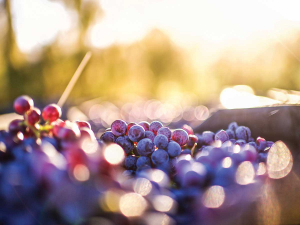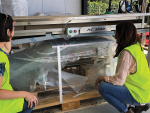All vineyards owned by New Zealand Winegrowers members are required to have an annual biosecurity vineyard registration completed each year.
This includes all producing vineyards, newly planted vineyards that will produce a crop within the next three years, and any non-productive vineyards that are still in the ground, and likely to be used for commercial wine production in the future. All vineyards (grower or winery-owned) contributing grapes to wines participating in New Zealand Winegrowers (NZW) events and activities are also required to complete the register annually.
Entering vineyard details in the register and updating them each year ensues that if a new vineyard pest or disease arrives in New Zealand, the NZW biosecurity team can contact all growers in the at-risk area as soon as possible. Growers will also be included in communications and informed of any progress if a biosecurity response occurs.
Annual completion of the register by growers enables NZW to maintain an accurate record of vineyar names, locations, planted area, grape varieties grown, and planting density. It also enables estimation of future plantings. When completing the registration, it is important to ensure the physical address of the vineyard is correct so the location can be verified.
The register is due to be completed by 30 June each year. Ideally, vineyards should be registered as soon as the vines have been planted, even if they are non-producing, as they can still be affected by pest and disease incursions. The area planted only includes the area under the vines and interrows, not the headlands, driveways/roadways, or buildings. While the register is not a Sustainable Winegrowing New Zealand (SWNZ) submission, it must be completed before a vineyard can be SWNZ-accredited.
Individual member's data is treated confidentially, and only anonymised collated information is released in the form of the Vineyard Report. The 2021 Biosecurity Vineyard Register data is now available online on the NZW members' website in the Vineyard Report 2022.
The Vineyard Report is published annually and is used to collate key industry data and statistics. The NZW marketing team uses it when communicating with the media and other trade organisations. It is also used to inform other resources suh as the New Zealand Wine textbook, varietal guides, and regional guides. Over time, the data collected in the reports also provide a clear record of the industry's growth and allows trends and changes in varieties and regions to be identified.
There were two new compulsory questions added to last year's register, and these will be repeated this year. The first question asks if you have a biosecurity plan in place. This requires a simple YES or NO answer. Biosecurity plan templates can be found on the NZW website, or you can contact the NZW biosecurity team and get a hard copy sent to you. NZW strongly recommends all vineyards have a biosecurity plan in place to mitigate the risks posed by new pests and diseases.
The other compulsory YES/NO question regards organic certification or if the vineyard is in conversion to an organic vineyard. If you select NO, you can move on. If you choose YES you need to enter the hectares that are Certified Organic and the amound Registered In Conversion to Organic.
You also need to tick the organic certifying body. Organic growers need to complete this section to ensure our records align with those of organic certification bodies. At the moment, organic vineyards are under-reported in the register compared to other organisations' records.
The 2022 Biosecurity Vineyard Register is currently open for completion and is due to be completed by 30 June 2022. Completing the biosecurity vineyard register is the simplest action you can take to help manage biosecurity risks in your vineyards.
If you haven't yet registered your vineyards this year, go to the NZW members website.
If you need assistance, email This email address is being protected from spambots. You need JavaScript enabled to view it.
2021 Biosecurity Vineyard Register
The 2021 Biosecurity Vineyard Register data is now available online in the Vineyard Report 2022.
Some key statistics from the report are:
- The 2022 total producing area is 41,603 hectares; a 2% increase on the preceding year
- The 2022 total producing area by wine type is:
- White Wine - 33,752ha
- Red wine - 7,851ha
- There are 2,101 active vineyards recorded in the register, with the average vineyard area being 20ha.
- Marlborough remains the largest producing region at 29,415ha - 71% of the total producing area.
- Sauvignon Blanc remains the most significant variety at 26,559ha - 64% of New Zealand's total producing area.
- Pinot Noir remains the most significant red variety at 5,807ha - 14% of the total producing area.
- 57% of the total producing area is Marlborough Sauvignon Blanc at 23,834ha. This in itself could be a significant biosecurity risk.
Diagnostic Laboratory Testing Services and Viticultural Consultants
New Zealand Winegrowers (NZW) is collating a list of viticulture Diagnostic Laboratory Testing Services and Viticultural Consultants to share with our membership. Please note, NZW does not endorse any providers - this will only be a list of services that NZW is aware of, for ease of reference. Members should conduct do their own due diligence when selecting a provider. If you would like your business or service to be included on the list, please send an email to This email address is being protected from spambots. You need JavaScript enabled to view it.





